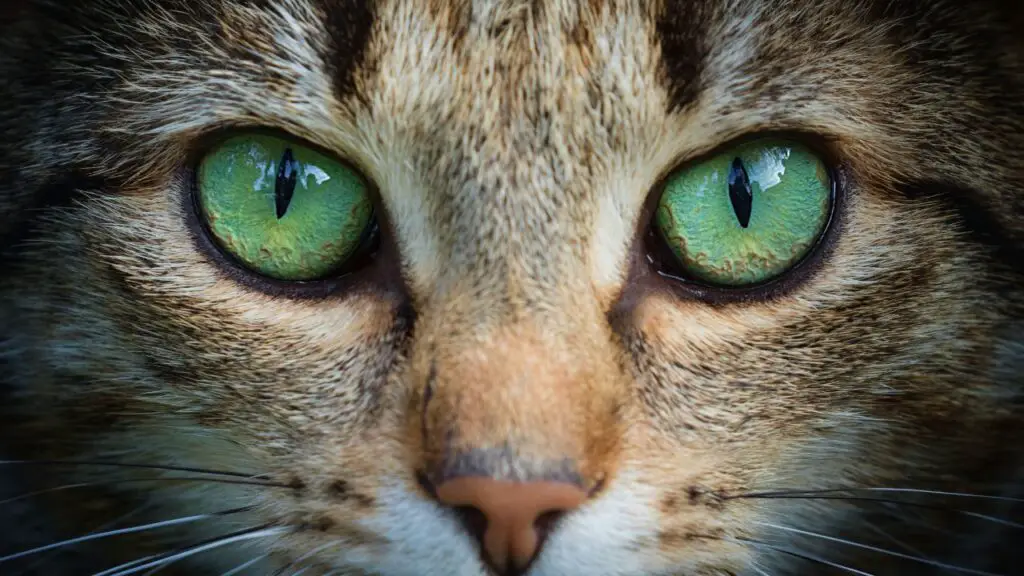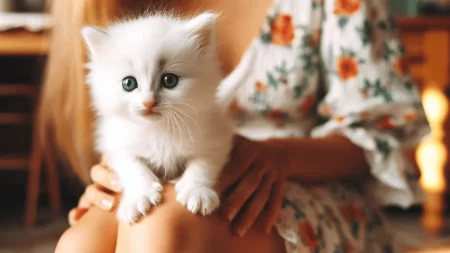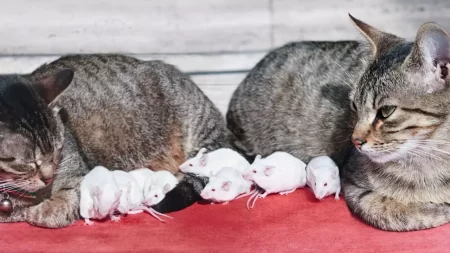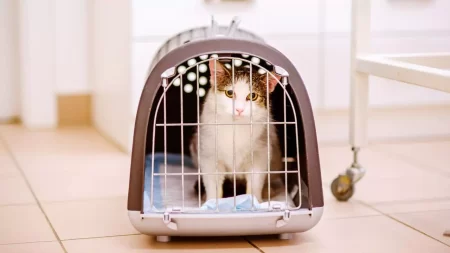Cats’ eyes dilate when they attack because it allows them to see better in low-light conditions.
Cats have vertical slit-shaped pupils that can change in size and shape depending on the amount of light available.
When a cat is stalking or hunting its prey, its pupils will typically dilate, letting more light enter the eye and improving the cat’s vision.
This also helps the cat to see movement better, which is important for catching prey.
Cats’ eyes may also dilate when they are excited, angry, or afraid. This is because the dilation of the pupils is controlled by the autonomic nervous system, which is responsible for the body’s involuntary functions such as the “fight or flight” response.
When a cat feels threatened or aggressive, its pupils may dilate to prepare for action or to intimidate its opponent. The dilation of the pupils may also make the cat appear larger and more ferocious.
Cats’ eyes may not always dilate when they attack, however. Sometimes, their pupils may constrict or remain normal depending on the situation and the cat’s personality.
For example, some cats may attack humans out of fear rather than aggression, and their pupils may be smaller than usual.
Therefore, it is important to look at other body signals such as ear position, tail movement, vocalization, and posture to understand your cat’s mood and intention.
Can a cat control the dilation of its eyes during an attack?
No, a cat cannot control the dilation of its eyes during an attack.
The dilation of the pupils is a reflex action that is controlled by the autonomic nervous system, which regulates the body’s involuntary functions.
A cat cannot consciously dilate or constrict its pupils, but it can influence them by changing its emotional state or focusing on different objects.
Why do some cats’ eyes not dilate during an attack?
Some cats’ eyes may not dilate during an attack for various reasons, such as:
- The lighting is bright enough that the cat does not need to dilate its pupils to see better.
- The cat is feeling defensive rather than aggressive and will likely not attack. Constricted pupils may indicate fear or submission.
- The cat has a health problem that affects its pupil size or response. Some conditions that can cause persistent or abnormal pupil dilation or constriction are glaucoma, uveitis, iris atrophy, head trauma, brain tumor, poisoning, or medication side effects.
If your cat’s eyes do not dilate during an attack, you should look at other body signals such as ear position, tail movement, vocalization, and posture to understand your cat’s mood and intention.
Are there any differences in eye dilation between domestic and wild cats during an attack?
Both domestic and wild cats have vertical slit-shaped pupils that can dilate or constrict depending on the amount of light and the emotional state of the cat.
However, there may be some differences in eye dilation between domestic and wild cats during an attack, such as:
- Domestic cats exhibit greater pupil size and shape diversity compared to their wild counterparts. This is attributed to their genetic variability and breeding practices aimed at producing specific traits. For example, some breeds of domestic cats have rounder pupils than others.
- Domestic cats may have more frequent or prolonged pupil dilation than wild cats, due to their exposure to artificial lighting and indoor environments that may affect their natural circadian rhythms. This may also make them more sensitive to changes in light levels.
- Domestic cats may have more complex or mixed emotions than wild cats during an attack, due to their socialization with humans and other animals. This may affect their pupil dilation depending on whether they feel playful, curious, fearful, aggressive, or defensive.
What role does adrenaline play in cats’ eye dilation during an attack?
Adrenaline, generated by adrenal glands, significantly influences cat eye dilation during an assault.
When cats sense danger or fear, adrenaline enters the bloodstream, readying the cat for fight or flight.
Pupil dilation, an effect of adrenaline, permits increased light entry for enhanced vision. This enables the cat to discern clearly in dim settings and evaluate potential threats.
Consequently, dilated pupils accompanied by a harsh growl or hiss indicate a combative, prepared cat.
Nonetheless, it is vital to recognize that excitement or playfulness can also cause pupil dilation, making it essential to carefully examine a cat’s body language to discern its emotions.







